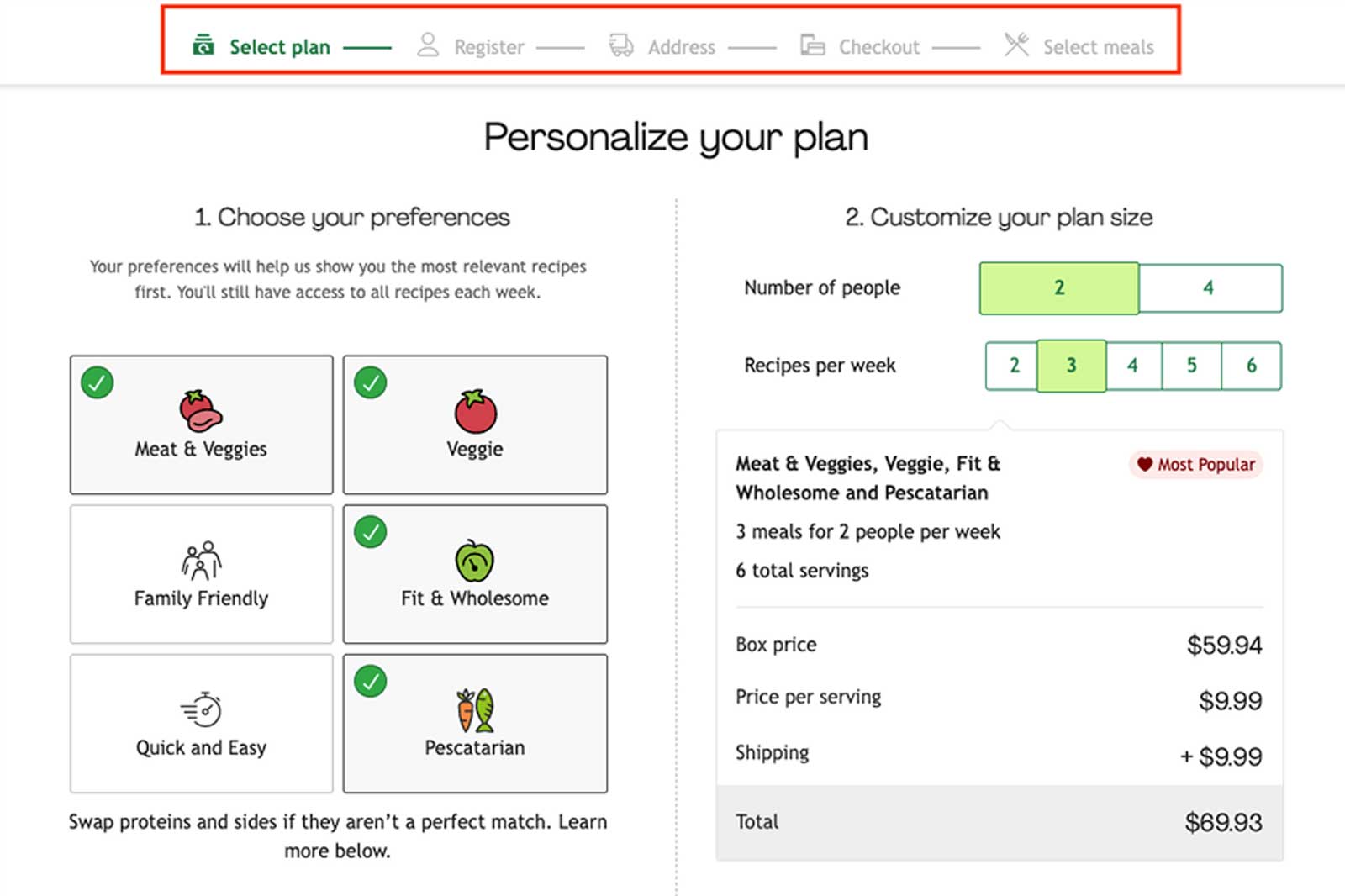Thanks to our sponsors for keeping this newsletter free for all of you! Check them out :)
Brought to you by NoBoringDesign. Have you ever had design completely block the launch of a marketing campaign?
Check out the team that has solved this problem for Loom, Dropbox, and Sendoso. And brought to you by ... us!
As many of you know, we have a Slack-based community—a place where passionate startup founders and marketers can connect and learn from each other.
Well, we want to take it to the next level. And we need your help to make it the best growth community out there. Together, I know we can build something great.
Take 2-3 minutes to fill out this survey, and as a special thanks, you'll get access to the 300+ growth tactics we've shared in this newsletter. |
Want to be featured in front of 78,000 founders and marketers? Learn more here. |
Hello and welcome to all you growth-loving founders and marketers.
This week we talk about the Goal Gradient Effect, Content Centers of Gravity, and speaking to a pain point you know your prospects have.
If I were cool, I would have had a third thing in all capitals but MEH.
Let's dive in 🤿
– Neal |
|
|
1. Use the Goal Gradient Effect for fewer abandoned carts
Insight from the Marketing Psychology Playbook.
Runners end races with a sprint finish, getting faster as they approach the finish line. The chance of them quitting plummets. This is an example of the goal gradient effect. We become more invested in completing a task when we think the end is getting closer. It’s yet another reason why reducing uncertainty during the checkout process is so important. If a shopper doesn’t know how long it’ll take to complete a purchase, they’ll miss that final sprint-to-the-finish-line burst of investment. And be more likely to abandon their shopping cart.
The easiest way to leverage this effect is to display a progress indicator during your signup or checkout process, such as the percentage of steps completed, the number of steps left, or a checklist. That way, shoppers know exactly how long until they can sit back and celebrate their new purchase.
Here are two examples, from Adobe and HelloFresh (I think HelloFresh's specificity is better): |
You can also use encouraging copy before and during the signup/checkout process to let users know how close they are to finishing. For instance: - “Signing up will only take three minutes.”
- “You’re halfway done.”
- “Almost there! Just one more question…”
-
“Last step: Where should we send X?”
If you're on Shopify, you can use an app like iCart for this. |
2. Create a Content Center of Gravity Insight from Superpath.
If you’re struggling to prioritize the content you create, you probably don’t have a well-defined content center of gravity. That's the core element that the rest of your content strategy is built around.
Defining your center of gravity (COG) helps inform the direction of your strategy. Below are a few different COGs, plus companies built around them.
Keywords (SEO): Companies create content around the keywords their audience searches for. That typically includes blogs, white papers, and FAQs.
This is the most traditional COG—which also means a lot of people think of it as the default content strategy. But growth agency CEO Ethan Smith advises holding off on SEO unless you have 1,000+ visits a day from non-SEO sources and 1,000+ referring domains. Otherwise, reaching SEO success is a slow grind.
Example: HubSpot has written content about nearly every possible keyword related to sales or marketing.
Use-case content: Think customer stories, webinars, templates, and other formats homing in on user pain points.
The goal is to provide solutions to those pain points with your content. This strategy is often informed by speaking to customers and determining common problems.
Example: Besides creating guides and templates, the productivity software company Scribe also runs a Slack group to understand user needs. Podcast: Repurposing content is the name of the game with a podcast as your COG. Using this strategy, you might turn interview transcripts into blog posts or newsletters, and publish short audio/video clips on social media. You leverage smart things said on the pod.
Example: The media company Testimonial Hero doesn’t rely on full-time writers to create content. It repurposes snippets from its podcast as YouTube videos and LinkedIn ads. ––– These aren’t the only possible COGs out there. Find a core format that's ideal for your product/industry, and use that to inform how you build and distribute your content. |
3. Speak to a pain point you KNOW your prospects have Insight from DC.
Nearly six years ago, before Substack, we had a client at our agency who helped creators offer premium, members-only content on their WordPress sites.
Their budget was limited, and the total market was relatively small: WordPress creators who monetized their audience with memberships. So ads and content were not a good fit. We opted to grow their business using cold email.
But as you know, almost all cold emails are terrible and instantly deleted.
You know when they're not? When they:
- Look like regular emails from people you know
- Talk about solving a huge pain point you actually have
For #1, we wrote in a casual tone. For #2, we did our homework.
We paid for scrapers and virtual assistants to go through lists of WordPress sites that sold memberships and label them based on the tool they were using. We did research into the top objections people had about each tool—likely their biggest headaches as creators.
In our emails, we called out those headaches and highlighted how our client's tool would relieve them. Another common objection was the headache of migrating. So we offered to do it for free.
Our response rate was nearly 80%. And we booked tons of sales demos. To make cold emails work, do your homework, and speak to your prospects' biggest headaches that you know they have. |
|
|
News you can use: -
Twitter is now kinda sorta known as X, I guess? Elon plans to remove all "bird" language and lean into the X branding. For now, it's a weird mishmash of both.
-
TikTok launched an ad library (currently only for ads running in Europe), where you can check out ad creatives, targeting, and the number of unique users who’ve seen them. Like Meta’s ad library, it’s a useful tool for competitor research and campaign inspiration.
-
A few highlights from recent AI news: You can now upload images to Google’s Bard chatbot, alongside text prompts. A study from Stanford and UC Berkeley researchers pointed out a drop in ChatGPT’s output accuracy. And Meta announced that they’re open-sourcing the code behind their LLaMA 2 large language model, so developers can use it for free.
- Lastly, instead of news you can use, how about news you can’t find? Here’s a helpful rundown of Meta and
Google’s response to Canada’s Online News Act—which includes plans to remove links to the news.
Tool we recommend: Duel*
Acquiring customers has never been harder for consumer retail brands. That’s why industry leaders like lululemon turned their existing customer base (a goldmine of potential affiliates, content creators and micro-influencers) into their biggest channel for growth. Jaclyn Crocker (ex-GM Retail & Community @ lululemon) is offering free, 1:1 sessions throughout August for brands in the DC community:
Join: Turning Customers Into Your Biggest Sales Channel
It covers: - How brands invest in people, not ads, to reduce their CAC
- How to identify the most valuable advocates in your audience
- Successful examples from Charlotte Tilbury, Monica Vinader and more
Sessions are free throughout August only. Book now to avoid missing out.
*Sponsored by Duel |
|
|
What did you think of this week's newsletter?
😍 Loved it | 😄 Great | 🙂 Good | 🤷♀️ Meh | 🤬 Bad
If you enjoyed this, please consider sharing it with a friend. These newsletters take hours to make each week, so it really helps when you share us with fellow founders and marketers.
Who's Demand Curve?
We’re on a mission to help make it easier to start, build, and grow companies. We share high-quality, vetted, and actionable growth content as we learn it from the top 1% of marketers. We democratize senior growth knowledge. How we can help you grow: -
Read our free playbooks, blog articles, and teardowns—we break down the strategies and tactics that fast-growing startups use to grow.
- Enroll in the Growth Program, our marketing course that has helped 1,000+ founders get traction and scale revenue.
Check out our Sprints: short video courses that are laser-focused on a topic in growth.
Want to build an audience of buyers? Join the waitlist for the Un-ignorable Challenge. -
Are you a funded startup looking to grow? Our agency, Bell Curve, can be your strategic growth partner.
Get your product in front of startup founders by sponsoring this newsletter.
See you next week.
— Neal, Grace, Joyce, Dennis, and the DC team. |
|
|
© 2023 Demand Curve, Inc. All rights reserved. 4460 Redwood Hwy, Suite 16-535, San Rafael, California, United States
Unsubscribe from all emails, including the newsletter, or manage subscription preferences. |
|
|
|







